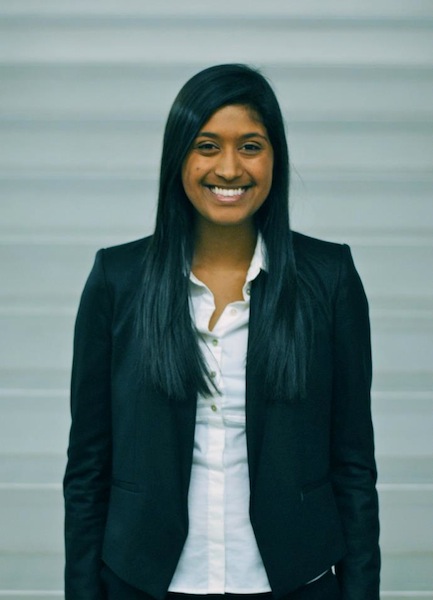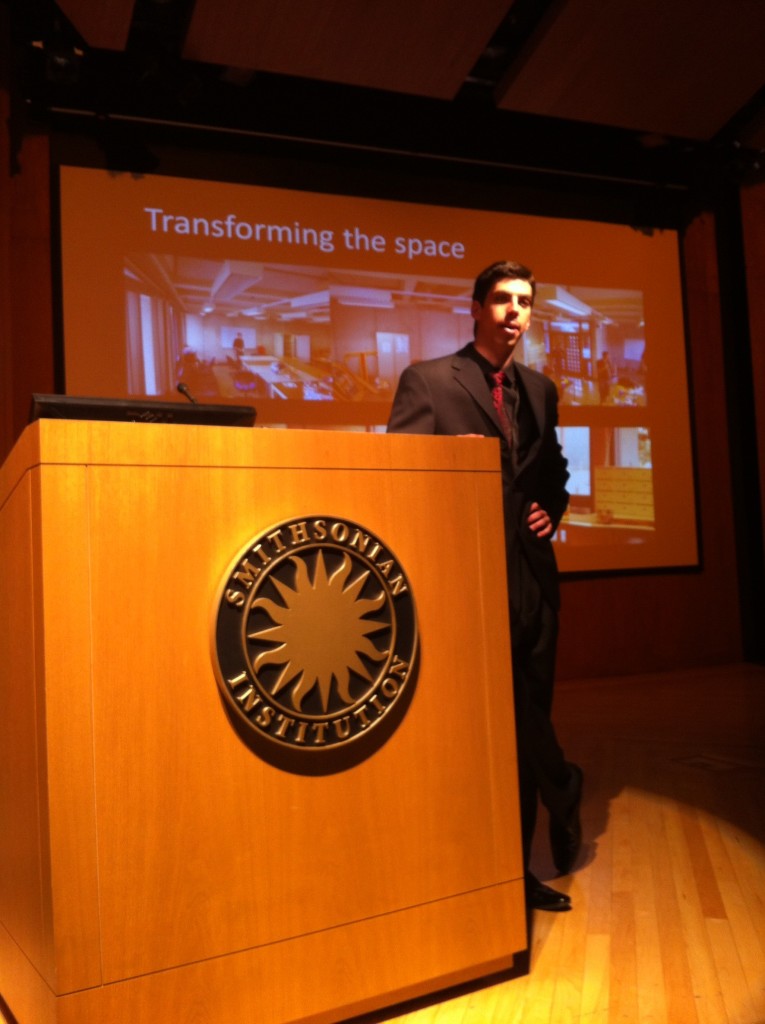Discovery and Design at Georgia Tech
University Innovation Fellows collaborated with local students and entrepreneurs at the Georgia Tech Regional Meetup in November 2016.
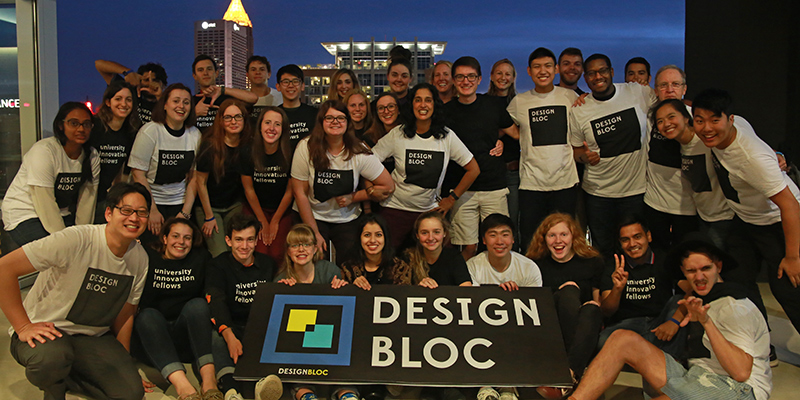
If you wanted to discover a new opportunity, learn how to build and test it, and figure out how to bring it to market — all in the space of two days — the University Innovation Fellows Georgia Tech Regional Meetup was the place to be. This event, held November 4-5, 2016, brought together Fellows and students at Georgia Tech to learn from entrepreneurs and thought-leaders from the school and surrounding community.
The event was hosted and designed by Georgia Tech Fellows and produced in collaboration with Georgia Tech’s DesignBloc, a hub for innovation, collaboration and creativity at Georgia Tech. Fellows involved in the event’s creation include Alexandra Flohr, Thomas Clifton, Arshiya Lal, Kshitij Kulkarni and their faculty sponsor Wayne Li, professor in the school of School of Industrial Design.
Regional meetups are designed to showcase the work that Fellows have been implementing at their schools; to spark student interest in innovation, entrepreneurship, creativity and design thinking; and to encourage collaboration with other Fellows and students in their region. Georgia Tech is one of seven schools that has hosted a University Innovation Fellows regional meetup in the last two years. Read more about other regional meetups here.
Twelve Fellows and faculty sponsors from seven schools attended the Georgia Tech event, along with more than 15 Georgia Tech students and alumni. Participants learned from a diverse group of speakers and participated in hands-on activities focused on entrepreneurship and a community’s entrepreneurial ecosystem.
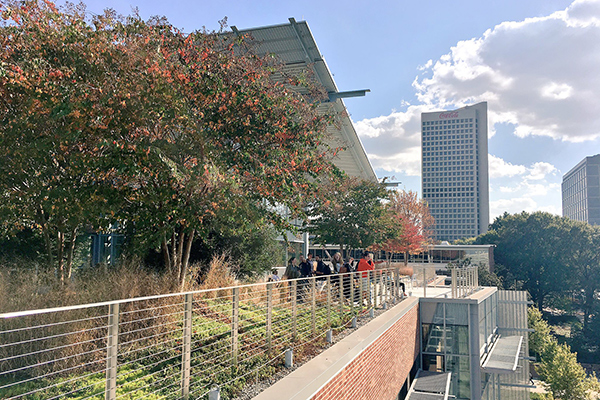
Fellows explore Georgia Tech’s beautiful campus
“As Director of the Innovation and Design Collaborative here at Georgia Tech, we’re always excited to partner with the University Innovation Fellows program to promote innovation, design thinking, and entrepreneurship on campus,” said Wayne Li.
On Friday, November 4, participants enjoyed treats and a chat with Tyler Rogers of local popsicle business King of Pops and heard from Albert Vita, Director of Strategy and Insights for In-Store Entertainment at Home Depot, on the possibilities for innovation within a large company. Vita shared his thoughts on the ways traditional retail is ripe for disruption and advised attendees to avoid traps that can happen as companies struggle to innovate, such as “not having true empathy for your customer.”
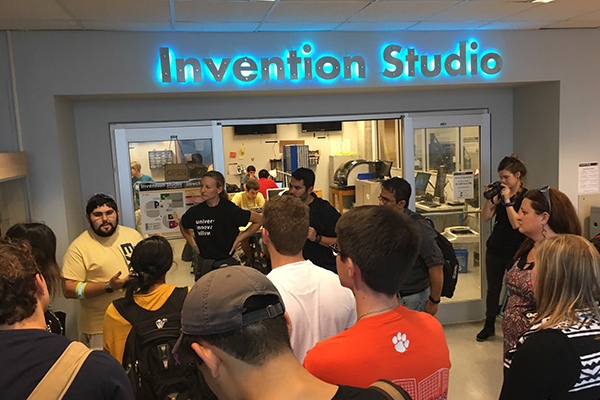
Participants then got an inside look at Georgia Tech’s unique Invention Studio. This fully-stocked makerspace is free, completely managed and operated by students, and open to students, faculty and staff from all backgrounds. Later in the afternoon, the group heard from Keith McGreggor of VentureLabs on the art of storytelling and visited the High Museum for its Friday night interactive event, where they viewed exhibitions, sketched live models and screen-printed bags.
The second meetup day on Saturday, November 5, started sweet, with breakfast from Sublime Donuts. The founder, Kamal Grant, gave attendees good advice about avoiding the “golden handcuffs” of a job that’s solid but not fulfilling. “Be expert, creative and audacious,” Grant said, adding that when you believe in something, you have to fully commit to it.
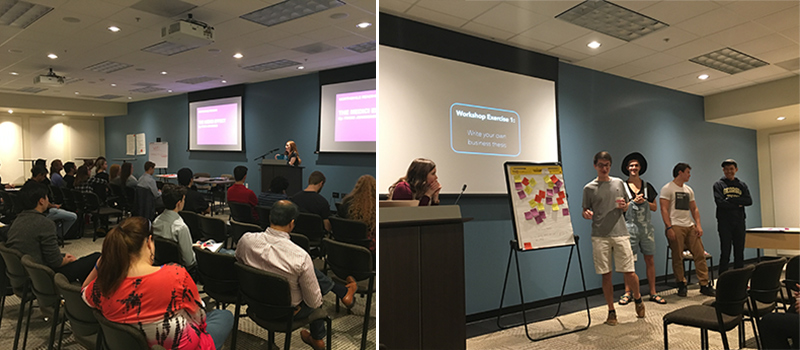
Rachel Ford, a University Innovation Fellow and Georgia Tech alumna who is now a program manager for TechStars, led the group through an exercise to explore assumptions. She asked teams of attendees to quickly create a sample business idea, explore the assumptions that would have to be validated, and decide what questions could be used in interviews to test those assumptions.
For his activity, Wayne Li opened a duffle bag on a table to reveal a treasure trove of PlayDough containers in a rainbow of colors. Participants paired up to interview one another about their favorite foods, and then created product prototypes out of PlayDough that were connected to their interviewee’s favorite food in some way. Then, they were asked to conduct the interview again, asking memory and emotion-related questions such as “What does that food remind you of?” and “Tell me about a memorable time when you ate that food?” Li asked the group to share the second set of PlayDough prototypes and what made the two sets different, and then led the group in a discussion on empathy in design.
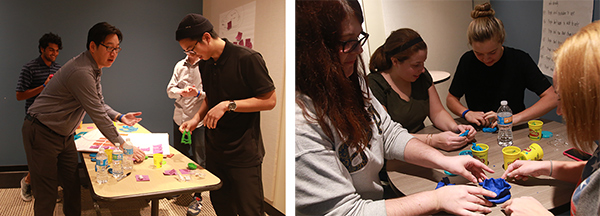
“The person I interviewed, he’s from India. A Kit Kat was his favorite food because when his father came back from business trips, it was something he gave him,” said Andrea Del Risco, a 2014 Georgia Tech alumna. “The activity was less about the functional side than the emotional reasons. I hadn’t thought about that part before.”
The day also featured talks by Carrie Moore of MJV Innovation about design projects at the intersections of fields; Lane Duncan from the School of Architecture on multi-disciplinary art and architecture; Bill Scott, an IDEO designer of the original Apple mouse, on the art of prototyping and designing with constraints; and Scott Sanchez from First Data on MAP (Minimum Awesomeness Product). After dinner, Bill Scott returned to lead a customer discover exercise focused around creating a new type of car to satisfy an unmet or unrealized customer need.
“I learned what it means to start business, to go from a ‘shower thought’ to multi-million-dollar business. The speakers lived that story,” said Collin Browning, a University Innovation Fellow from Clemson University. “I’m excited about promoting the innovation and entrepreneurship mindset on my campus and sharing this with other students.”
For more information on Georgia Tech’s Design Bloc, visit designcollaborative.gatech.edu.

